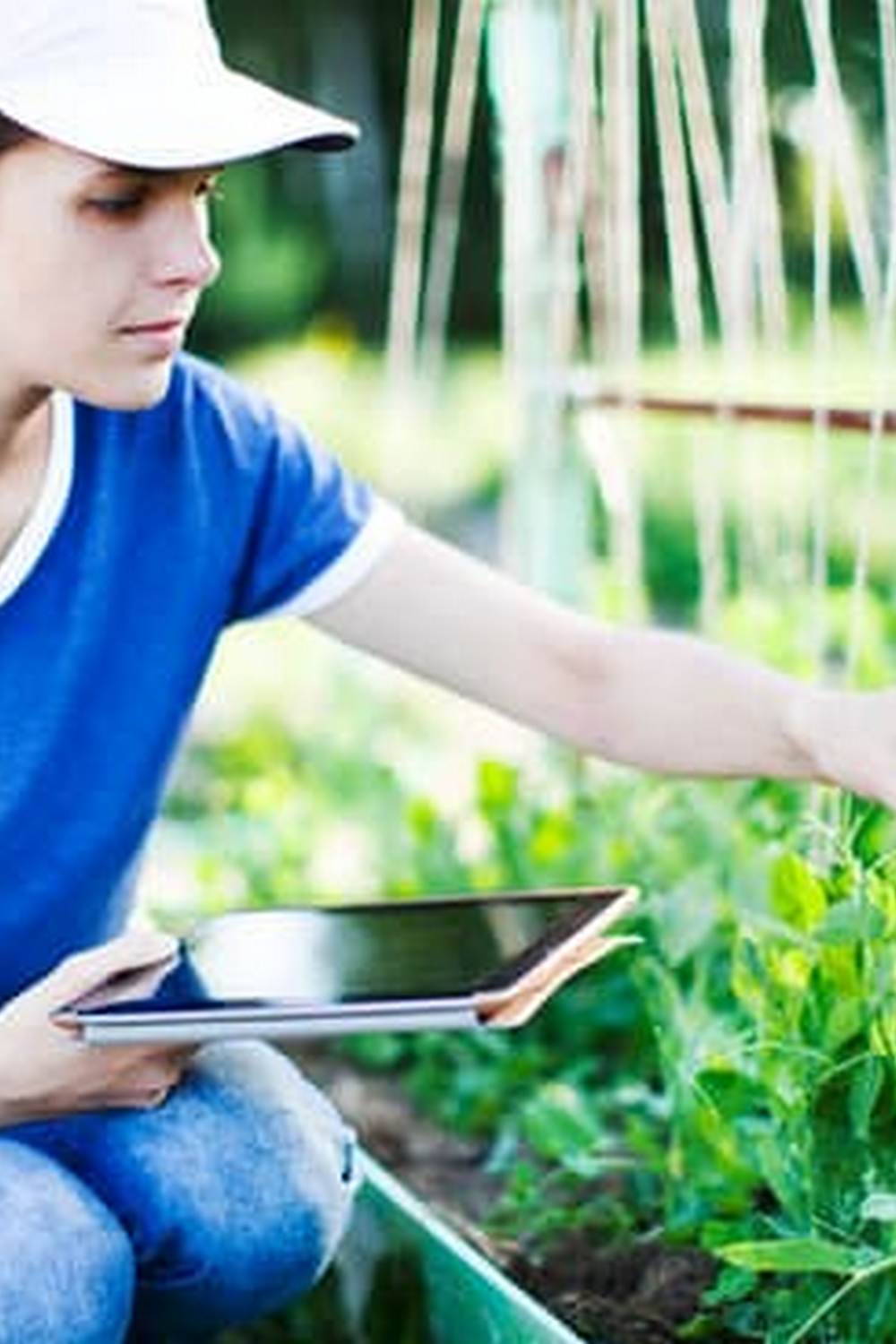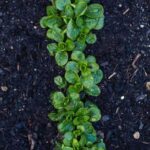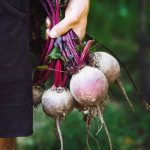Are you interested in starting a vegetable garden in Southern California? The region’s unique climate and soil conditions offer both opportunities and challenges for aspiring gardeners. In this article, we will explore the best practices, tips, and resources for successful vegetable gardening in Southern California. From choosing the right vegetables to preparing the soil and dealing with common pests, we’ll cover everything you need to know to grow your own homegrown produce in this sunny state.
Southern California’s Mediterranean climate, with its mild winters and hot, dry summers, provides an ideal environment for growing a wide variety of vegetables. However, the sandy or clay-like soil found in many areas of Southern California can present obstacles for successful gardening. By understanding these factors and learning how to work with them, you can create a bountiful and thriving vegetable garden right in your backyard.
In the following sections, we’ll delve into the specifics of choosing the right vegetables for Southern California’s climate and soil, as well as providing expert tips on preparing and amending the soil for optimal growth. Additionally, we’ll discuss planting times, watering techniques, and common pests to look out for. Whether you’re a seasoned gardener or just starting out, this article will provide valuable insights for vegetable gardening in Southern California.
Choosing the Right Vegetables for Southern California’s Climate and Soil
When it comes to vegetable gardening in Southern California, choosing the right vegetables is crucial for a successful harvest. The region’s climate and soil conditions can vary greatly, so it’s important to select vegetables that are well-suited to these specific conditions. Here are some tips for choosing the right vegetables for your Southern California garden:
- Consider the climate: Southern California has a Mediterranean climate, characterized by mild, wet winters and hot, dry summers. Choose vegetables that thrive in these conditions, such as tomatoes, peppers, eggplant, and squash.
- Take note of soil quality: The soil in Southern California can also vary widely, from sandy to clay-like. Consider conducting a soil test to determine its pH levels and nutrient content. Once you have a better understanding of your soil, you can choose vegetables that are well-suited to its specific qualities.
- Choose heat-tolerant varieties: Since Southern California experiences hot summers, it’s important to select vegetables that can handle high temperatures. Look for heat-tolerant varieties of popular crops like lettuce, spinach, and broccoli.
By carefully selecting the right vegetables for your Southern California garden, you can ensure a bountiful harvest and a successful growing season.
In addition to considering the climate and soil conditions in Southern California, it’s also important to think about the space available in your garden. If you have limited space or are interested in container gardening, consider growing compact or dwarf varieties of your favorite vegetables. These smaller plants are well-suited to small spaces and can thrive in containers on patios or balconies.
Another important factor when choosing vegetables for your Southern California garden is considering water requirements. Given the region’s limited water resources and periodic droughts, it’s advisable to select drought-tolerant vegetable varieties whenever possible. Examples of drought-tolerant vegetables include artichokes, Swiss chard, and certain types of beans.
Ultimately, by choosing the right mix of vegetables that are well-matched to Southern California’s climate and soil conditions-and complementing them with efficient watering techniques-you can set yourself up for vegetable gardening success in this unique region.
Tips for Preparing and Amending Soil for Successful Vegetable Gardening
Understanding Southern California Soil
Southern California’s soil is known for being sandy, rocky, and often lacking in organic matter. This can present challenges for successful vegetable gardening as it may not retain water or nutrients well. It’s important to understand the composition of the soil in your specific area and make the necessary amendments to ensure a healthy growing environment for your vegetables.
Soil Preparation and Amendment Techniques
To prepare the soil for vegetable gardening in Southern California, consider adding compost, organic matter, and other soil amendments to improve its texture and fertility. One popular method is sheet composting, where layers of organic materials like leaves, grass clippings, and kitchen scraps are added directly onto the garden bed. Over time, these materials will break down and enrich the soil, providing essential nutrients for vegetable plants.
In addition to adding organic matter, pH levels should also be checked and adjusted if necessary. Most vegetables prefer slightly acidic soil with a pH range of 6.0 to 7.0. Soil testing kits are readily available at garden centers or through local agricultural extension offices, providing valuable information about your soil’s current condition.
Companion Planting for Soil Health
Companion planting involves growing different crops together to benefit one another. For example, planting nitrogen-fixing legumes like peas or beans alongside other vegetables can help improve the soil’s fertility by adding nitrogen back into it. Furthermore, certain plants have natural pest-repelling properties that can protect neighboring vegetables from harmful insects. Experiment with companion planting techniques to not only improve your soil but also create a more diverse and resilient garden ecosystem.
The Best Planting Times and Schedules for Southern California
When it comes to vegetable gardening in Southern California, timing is everything. The region’s unique climate and soil conditions require careful consideration when planning planting times and schedules. Here are some key factors to keep in mind for successful vegetable gardening in Southern California.
Understanding the Microclimates
Southern California is known for its diverse microclimates, ranging from coastal areas to inland valleys and desert regions. Each microclimate has its own unique weather patterns and temperature variations, which can significantly impact the best planting times for different vegetables. It’s important for gardeners to research their specific microclimate and consider how it may affect their planting schedule.
Warm-Season vs. Cool-Season Crops
In Southern California, gardeners can take advantage of a long growing season to cultivate both warm-season and cool-season crops. Warm-season crops like tomatoes, peppers, and eggplant thrive in the region’s hot summers, while cool-season crops such as lettuce, spinach, and broccoli prefer the milder temperatures of winter. By carefully planning the timing of their plantings, gardeners can maximize their harvests throughout the year.
Utilizing Succession Planting
Succession planting is a valuable technique for ensuring a continuous supply of fresh vegetables in a Southern California garden. By staggering plantings at regular intervals, gardeners can avoid gluts of produce while extending their harvests. This approach requires careful planning and attention to detail but can result in a more productive and efficient vegetable garden overall.
By taking into account the unique climate and soil conditions of Southern California, as well as understanding the best timing for planting warm-season and cool-season crops, gardeners can optimize their success in cultivating a bountiful homegrown harvest. With proper planning and attention to timing, vegetable gardening in Southern California can be both rewarding and prolific.
Watering and Irrigation Techniques for Vegetable Gardening in Southern California
Southern California’s climate can be quite challenging for vegetable gardening due to its dry and arid conditions. Water conservation is crucial, especially with the region’s limited water supply. When it comes to watering and irrigation techniques for vegetable gardening in Southern California, there are several strategies that can help gardeners maximize water use while ensuring a healthy and thriving garden.
One effective method is drip irrigation, which delivers water directly to the base of plants, minimizing evaporation and ensuring that water reaches the roots where it is needed most. This technique not only conserves water but also helps prevent common issues such as fungal diseases that can occur with overhead watering. By using a timer on your drip system, you can ensure that your plants receive consistent moisture without wastage.
Another technique to consider is mulching, which helps retain soil moisture by reducing evaporation. Organic mulches such as straw or wood chips can also improve soil structure and fertility over time. Additionally, practicing deep watering-by irrigating deeply at longer intervals-encourages plant roots to grow deeper into the soil in search of moisture, making them more resilient during periods of drought.
It’s important for vegetable gardeners in Southern California to closely monitor their plants’ water needs throughout the growing season, adjusting irrigation schedules as necessary based on weather conditions. By employing these efficient watering and irrigation techniques, gardeners can mitigate water waste while supporting healthy plant growth in their vegetable gardens.
Common Pests and Diseases to Look Out for in Southern California Vegetable Gardens
As with any type of gardening, dealing with pests and diseases is a common challenge for vegetable gardeners in Southern California. However, being aware of the potential threats and knowing how to identify and address them can help ensure a successful harvest. Here are some common pests and diseases to look out for in your Southern California vegetable garden:
- Aphids: These tiny insects feed on plant sap and can cause stunted growth and curled leaves. Combat aphids by spraying plants with a strong jet of water or using insecticidal soap.
- Whiteflies: They are small, airborne insects that can quickly infest a garden. Yellow sticky traps can help control whiteflies, as well as introducing natural predators like ladybugs.
- Powdery Mildew: This fungal disease appears as a white powdery substance on leaves, causing them to yellow and wither. Improve air circulation around plants by spacing them properly and avoid overhead watering to prevent powdery mildew.
In addition to these common pests and diseases, Southern California vegetable gardeners should also be on the lookout for tomato hornworms, snails and slugs, blossom end rot in tomatoes, and downy mildew in cucumbers.
It’s important to regularly inspect your vegetable plants for any signs of pest infestation or disease so that you can take action promptly. By practicing good gardening habits such as proper spacing between plants, providing adequate air circulation, keeping the garden clean from debris, and using organic pest control methods when needed, you can minimize the impact of pests and diseases on your vegetable gardening efforts in Southern California.
Harvesting and Preserving Tips for Southern California Homegrown Vegetables
In Southern California, the climate and soil conditions are well-suited for growing a wide variety of vegetables. When it comes to harvesting homegrown vegetables in this region, timing is crucial. Vegetables should be harvested when they are at their peak ripeness for the best flavor and nutrition. For example, tomatoes should be picked when they are fully colored but still firm, while lettuce should be harvested before it begins to bolt or go to seed.
Once harvested, it’s important to properly preserve the vegetables to prolong their shelf life and enjoy them beyond the growing season. One popular method for preserving homegrown vegetables is through canning. This involves heating jars of food to a specific temperature in order to kill microorganisms that cause spoilage, thus allowing for long-term storage.
Another option is freezing, which helps retain the flavor and nutrients of the vegetables. However, not all vegetables are suitable for freezing as some may become mushy or lose their texture.
It’s also important to consider pickling as a preservation method, especially for cucumbers and other types of produce that lend themselves well to this process. Pickling not only preserves the vegetables but also adds a tangy and flavorful twist to them. Regardless of the preservation method chosen, proper storage is key in maintaining the quality of homegrown vegetables from Southern California’s vegetable gardens.
| Vegetable | Best Harvest Time |
|---|---|
| Tomatoes | Fully colored but still firm |
| Lettuce | Before it begins to bolt or go to seed |
| Cucumbers | Firm and bright in color |
Success Stories and Inspirational Tips From Southern California Vegetable Gardeners
Southern California is a unique region for vegetable gardening due to its warm, Mediterranean climate and diverse soil types. Many gardeners in the area have found great success in growing their own homegrown vegetables, despite the challenges that come with this specific environment. Whether you are a seasoned gardener or just starting out, hearing from others who have excelled in their vegetable gardening endeavors can provide valuable insights and motivation.
One of the key factors to achieving success with vegetable gardening in Southern California is choosing the right vegetables for the climate and soil. Many experienced gardeners in the region recommend focusing on heat-tolerant and drought-resistant varieties such as tomatoes, peppers, zucchini, and Swiss chard. These vegetables are well-suited for the long, hot summers and limited water resources that are characteristic of Southern California.
In addition to selecting the appropriate vegetables, preparing and amending the soil is crucial for successful gardening in Southern California. The soil in this region can vary widely, from sandy to clay-based, so it’s important to conduct a soil test and add organic matter such as compost or well-rotted manure to improve its structure and fertility. Gardeners often emphasize the significance of good soil quality for healthy plant growth and abundant harvests.
| Vegetable | Ideal Planting Time |
|---|---|
| Tomatoes | February – March |
| Zucchini | March – April |
| Peppers | April – May |
Resources for Further Learning and Support for Vegetable Gardening in Southern California
In conclusion, vegetable gardening in Southern California can be a rewarding and fulfilling experience for any enthusiast. The unique climate and soil conditions in this region provide an opportunity to grow a wide variety of vegetables, from tomatoes and peppers to leafy greens and herbs. By choosing the right vegetables, preparing the soil, following proper planting schedules, and implementing effective watering and pest control techniques, gardeners in Southern California can enjoy a bountiful harvest throughout the year.
For further learning and support in vegetable gardening in Southern California, there are numerous resources available to help both beginners and experienced gardeners. Local nurseries and gardening centers often offer workshops, classes, and expert advice on growing vegetables in this specific region. Additionally, online forums, social media groups, and community organizations can provide a platform for gardeners to connect with each other, share experiences, and seek guidance on various aspects of vegetable gardening in Southern California.
As passionate gardeners continue to share their success stories and inspirational tips for vegetable gardening in Southern California, it’s clear that the potential for homegrown produce is endless. With the right knowledge, preparation, and ongoing support from the community, anyone can cultivate a thriving vegetable garden in their own backyard.
So whether you’re just starting out or looking to expand your existing garden, there are plenty of opportunities to learn, grow, and contribute to the vibrant vegetable gardening community in Southern California.
Frequently Asked Questions
When Should I Start My Vegetable Garden in Southern California?
In Southern California, the best time to start your vegetable garden is in late winter or early spring. This allows the soil to warm up and creates optimal growing conditions for most vegetables.
What Vegetables Grow All Year Round in Southern California?
Some vegetables that can be grown year-round in Southern California include tomatoes, peppers, kale, Swiss chard, lettuce, spinach, and herbs like rosemary, sage, and thyme. These crops thrive in the region’s mild climate.
Is It Legal to Grow Your Own Vegetables in California?
Yes, it is legal to grow your own vegetables in California. In fact, many cities in the state have implemented laws that support urban gardening and even allow residents to keep chickens for eggs. However, it’s important to familiarize yourself with local regulations and any homeowners’ association rules that may apply.

If you’re looking to get into vegetable gardening, or are just looking for some tips on how to make your current garden better, then you’ve come to the right place! My name is Ethel and I have been gardening for years. In this blog, I’m going to share with you some of my best tips on how to create a successful vegetable garden.





